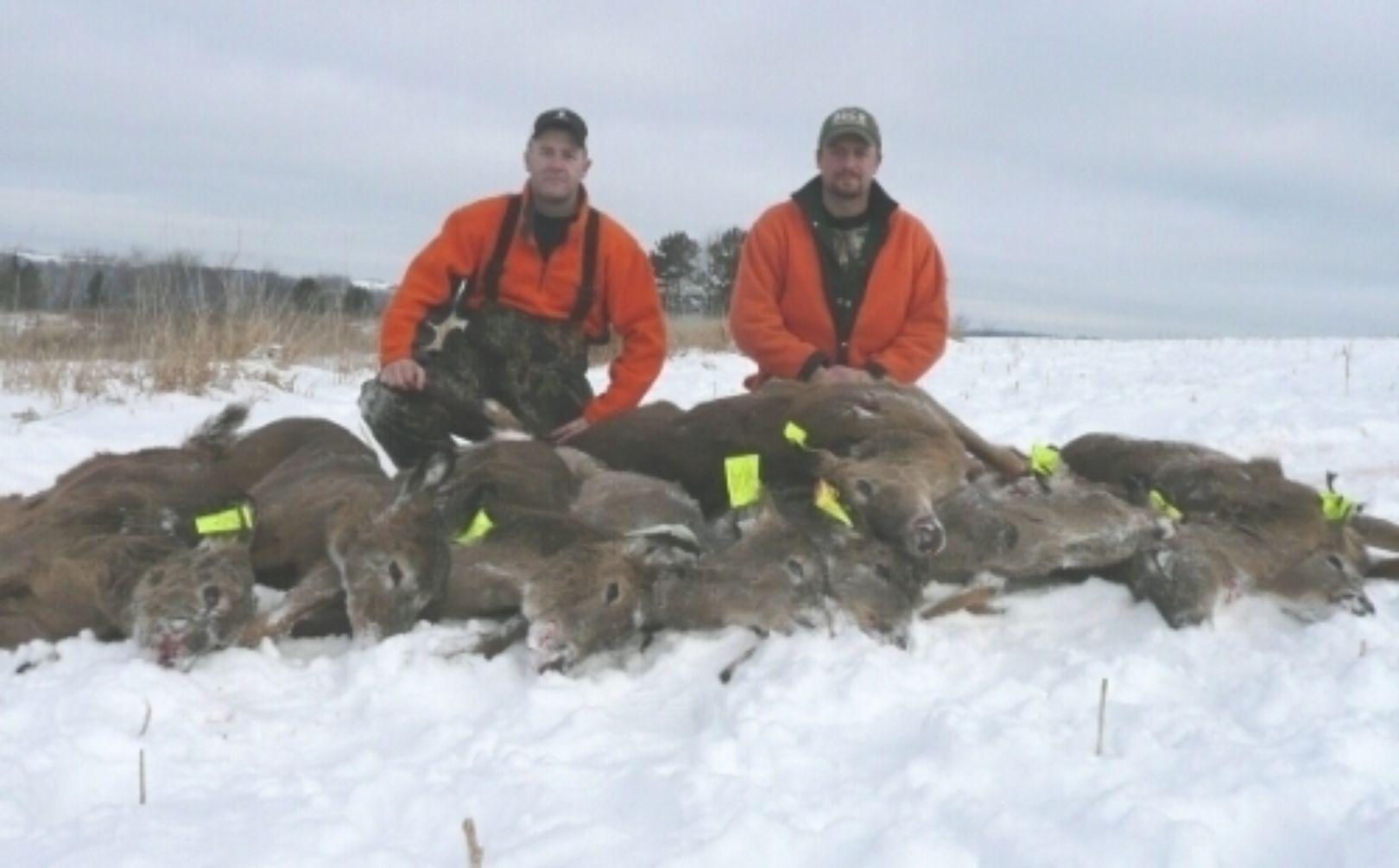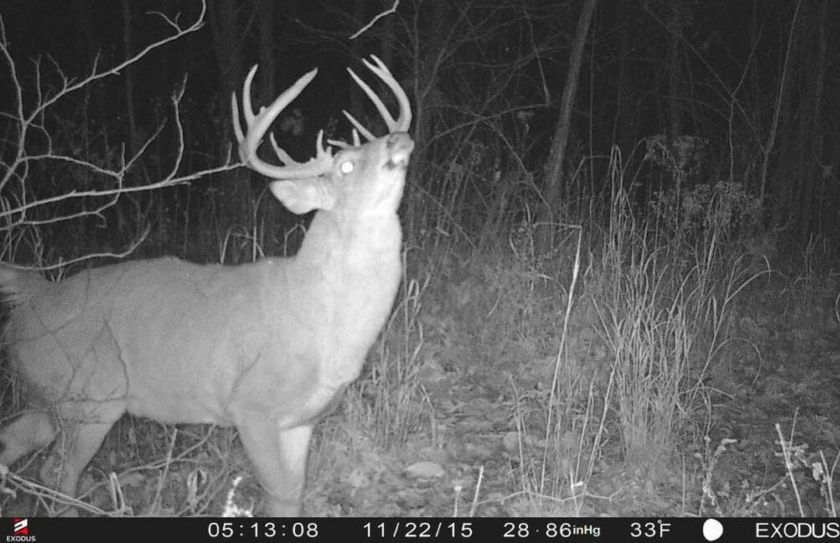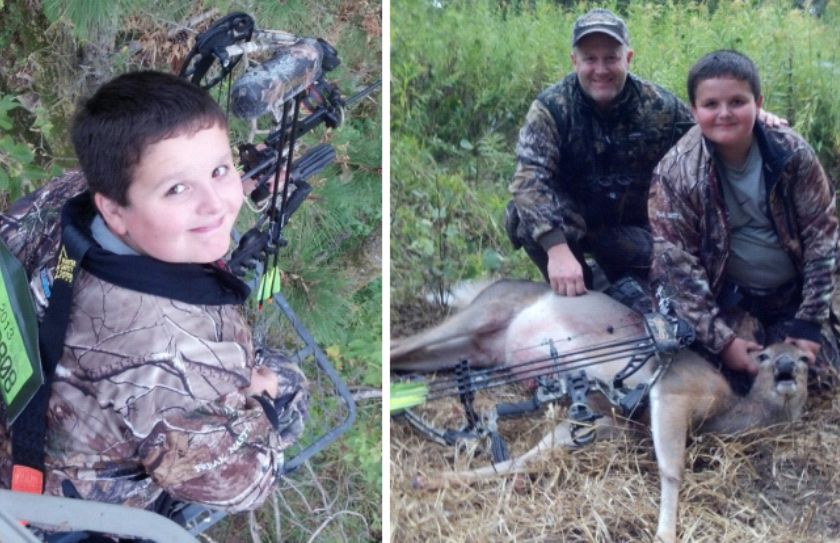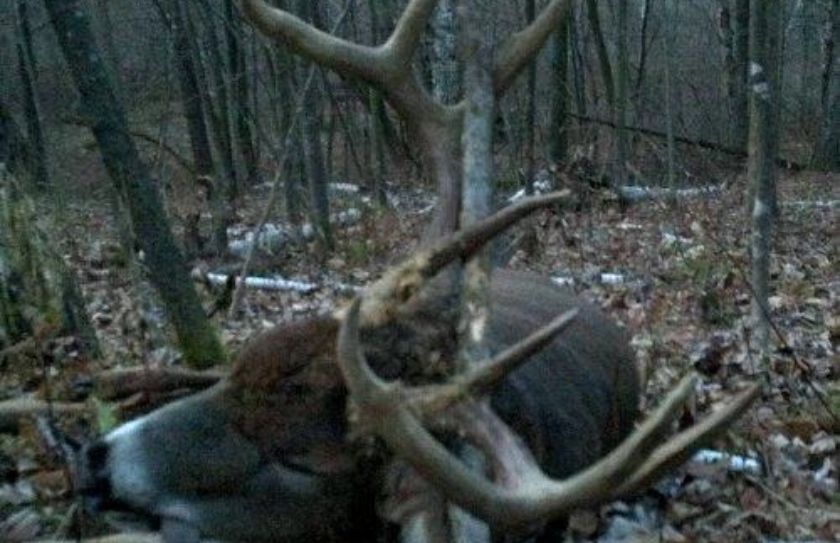
*Warning...if harvesting does is offensive to you, this may not be the article for you. The following is not intended to promote the overharvest of does, but to guide those that do need to reduce their herd, with proven methods to do so non-invasively.
The above picture is one of the most popular pictures I have ever shared. I am not exactly sure why, but I can guess for starters- it may be because it is a picture of a huge pile of does! Would you believe that those 9 does were harvested in less than 5 hours of hunting by 2 hunters, in the same day? Our harvest numbers would have also been much higher, if it hadn't been for a gun safety left in the "off" position, a vibrating cell phone at just the wrong time and 3 misses. The complete story of the hunt is for another day, but those does represented a significant percentage of the antlerless portion on the property we hunted. Also, and most importantly, at least 4 of the does were specific, target does that we were familiar with. When it comes to producing a quality herd on your land that is in balance with the habitat, and also includes your parcel's potential of mature buck hunting opportunity; Is the antlerless portion of the population on your land easy to specifically harvest, when the time is right? That question is one of the most important questions that you should explore and ponder as it relates to your land's current level of herd health and potential hunting success. The mature does on your favorite hunting grounds should be easy to hunt and harvest, and here are 5 reasons why:
1. Herd Mentality
Unlike the independent, loner characteristics of a hunting-season mature buck, the dynamics of a doe family group feature a hierarchy of social activies within an established movement dictated by "herd mentality". Doe family groups think as a herd, feed as a herd and often bed during the daytime as a herd. A mature buck does not. One of the many examples that I can share with you about this behavior is when my hunting partner Karl observed a small herd of 8-10 does, fawns and 1 mature buck escaping across a field from our overly active hunting neighbor's property to the South. As they headed into the woods to the North, Karl didn't have enough time to capture the buck in his sites and they entered the woodlot without a shot. I had killed a buck in the morning, and Karl knew the entire herd was running right at me. A couple of hours later after we were back at the motel he asked if I had seen the herd. I told him not only did I see it, but they just about ran me over as I was on the ground eating a sandwich, and waiting for the close of the day to exit woods. As the deer ran past me, they eventually stopped within 30-40 yards and didn't have any idea I was sitting on the ground next to my dead buck. Maybe they smelled the buck and felt comfortable, or maybe the turkey and cheddar, who knows...but I had a great view of all of them and 1 thing stuck out, no buck! Somewhere between the 100 yards of cover that Karl saw them enter before they reached my position, that mature buck did what mature bucks do...he made is own decision and slipped out a side exit. If you remember nothing else about this article remember that point! A mature buck during the hunting season is most often an independent thinker, and a wise old doe most often thinks and makes a decision within an established herd mentality. For an extreme example, take some time to Google Tanzania's annual wildebeest migration where crossing a deep, crocodile infested river is the ultimate display of herd mentality.
2. Food and Cover
Outside of survival and the annual fawning period during the summer months, doe family groups focus on two primary activities each and every day: Food and cover. If you provide adequate food and cover, as well as safe travel between each, then you can facilitate a social mentality of daily herd dynamics that you can set your watch to. In the above picture, my hunting buddy Skip and I were able to specifically target known does based on the fact that for 3 months of the season they were allowed to bed and dine in the same location, every day without interuption. The same does and their fawns could be observed traveling each and every day from food to cover and back again, with an ever-strengthening promotion of a false sense of security. If you allow this pattern to repeat itself every day, setting up for and harvesting antlerless deer can be completed with a high level of defined efficiency! Individual does that you may have observed for many years become highly predictable to harvest when you feel it is best to do so.
3. Antlerless deer are very dependable creatures.
When Skip and I set up for a 2 hour evening hunt to shoot does during our annual doe harvest, were relying on certain does, to exit particular bedding areas, and travel to specific food sources. By taking stand positions several hundred yards apart we simply shot the first mature doe that entered the fields from particular bedding areas, and then turned our attention to the next bedding area. By the end of our 2 hour sit, 6 out of the 9 does we harvested for the day, were scattered across the landscape. We counted on specific doe family groups to use the established travel patterns we were familiar with, and we were not disappointed.
4. Herd Hierarchy
When you take out the matriarch, the subordinate does within the established hierarchy become easier targets, and vulnerable to extended harvest opportunities. During the gun season of 1997 I took a stand position on corner of a small 5 acre woodlot to watch for a buck to step ouf of the standing corn field, and into the picked portion of the field. Suddenly behind me and only 40 yards away, 3 mature does and their fawns began feeding towards me. I slowly turned and shot the largest, lead doe of the small group. She immediately drop with very little movement, and the other does looked around. I readied for a flurly of run and flight, but to my suprise the remaining does and fawns simply started to browse again while continuing to travel slowly to the cut corn field. I smiled, enjoyed the rest of the evening hunt while waiting for an opportunity at a buck -with no deer being spooked from the single shot of the 12 guage slug-gun! When you combine an established herd mentality within consistent and preserved daily movements, a significant antlerless harvest can be experienced within a short period of time, with minimal impact on the "huntability" of the land.
5. Doe family groups are "homebodies".
What does that mean? It means that the daily life of a doe encompasses just a fraction of the total acres of a mature buck. By providing safe food, safe cover and safe travel to and from those two daily requirements, the table is set for an incredibly stable antlerless population that shouldn't stray far. Doe family groups are very territorial, and in my experience rarely leave their preferred pattern of daily movements unless they are distrupted by predation or hunting pressure. The more consistent the food soure, and the closer the adequate bedding cover is located to that food source, the smaller the distance that a doe family group needs to move during the hunting season. What does that mean for you? It means that you can develop a highly defined strategy to individually target multiple doe family group movements....even on a very small parcel. Multiple small, short movements equals multiple potential stand locations and access routes to systamatically harvest antlerless deer when needed.
Conclusion
Now that those 5 points have been discussed, there is 1 problem that typically enters equation: Hunting Pressure! At the risk of possibly offending some of you (this is really not my intention!), the level of ease that you experience in your doe harvest efforts is directly reflective of the overall potential herd health and hunting success that you can expect to experience on your land. Simply, if you have a hard time tagging a doe...you will have an extremely hard time obtaining a quality herd that is in balance with the habitat, let alone the ultimate mature buck potential that you desire.
My hope is that you can use this article as a guide for a quick "check-up" of the health of your own herd and hunting efforts. I have experienced that nearly 1/2 of a doe population can be harvested in 1 day, let alone a few strategic hunts scattered over a 3-4 month season. Establishing a structured, social dynamic of dependable antlerless movements on the lands that you hunt is awesome to experience! It's not hard to accomplish, and it is truly reflective of how successful your whitetail activities have been. Once you have obtained a high level of success with you doe management efforts, a quality buck herd becomes a much easier task. If your doe herd is stressed and pressured, it is nearly impossible to create an atmosphere that is conducive to the independent-loner aspects, favored by mature bucks.
How is your property really doing, heading into the start of the upcoming deer season? It is never too late to create your own picture of doe management success on the small parcel you hunt, when you practice effective, doe management for big buck tactics!


